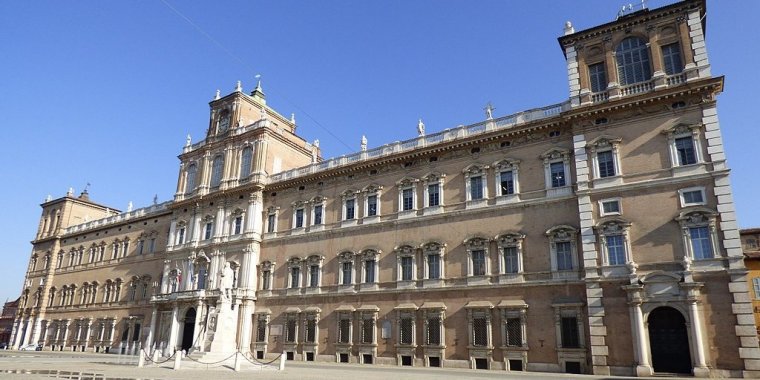| Travel / Tourist Attractions |
Ducal Palace of Modena, Italy

Ducal Palace of Modena, Italy. ![]()
The Ducal Palace of Modena is a Baroque palace in Modena, Italy. It was the residence of the Este Dukes of Modena between 1452 and 1859. It currently houses a portion of the Italian Military Academy.
The palace occupies the site of the former Este Castle, once at the periphery of the city. Although generally credited to Bartolomeo Avanzini, it has been suggested that advice and guidance in the design process had been sought from Pietro da Cortona, Gian Lorenzo Bernini and Francesco Borromini.
The Palace has a Baroque façade from which the Honour Court and the Honour Staircase can be accessed.
In 1696, Marcantonio Franceschini was commissioned to create a frescoed ceiling for the central Sala d'Onore ("Hall of Honour") for the marriage of Rinaldo d'Este to Princess Charlotte Felicity of Brunswick. The Salottino d'Oro ("Golden Sitting Room"), covered with gilded removable panels, was used by Duke Francis III as his main office.
The Palace currently houses the Italian Military Academy, the Military Museum and a library.
Military ceremonies are held in the Honour Court.
Source
• www.wikipedia.org
YOU MAY ALSO LIKE





